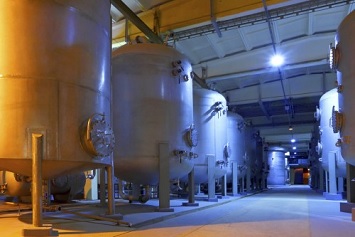Since January 2011, the Preparedness Unit in the EPA’s Region 8 Office has published a quarterly newsletter that provides the public with “information on any and all aspects of preparedness.” One general goal of the newsletter is to educate the public and industry about federal programs specifically intended to prevent releases of hazardous substances that may immediately threaten public health, as well as programs that inform the public about hazardous substances in their community.

These programs include the Clean Air Act’s Risk Management Program (RMP), the Clean Water Act’s oil Spill Prevention, Control, and Countermeasure (SPCC) program, and the Toxics Release Inventory (TRI) of the Emergency Planning and Community Right-to-Know Act (EPCRA). Since early 2018, the newsletter has increased its focus on EPCRA Sections 301 to 303 (Emergency Planning); Section 304 (Emergency Notification); and Sections 311 and 312 (Community Right-to-Know Requirements). The issues include an FAQ section that clarifies uncertainties about EPCRA requirements. We selected three of the more interesting questions and answers and summarize them below.
Is There a Time Period That Constitutes ‘Present at the Facility?’
Q: A facility owner/operator makes a specialty chemical by producing a chemical reaction intermediate and then injecting chlorine into the reaction vessel to start the final reaction for the final product. The facility runs these batches three to four times a year. The reaction intermediate is over 10,000 pounds (lb) for about a half a day. Is the facility required to have a safety data sheet (SDS) for the intermediate? Because the substance is not on-site for 24 hours, must it be reported on Tier II?
A: Because the facility owner/operator is required to prepare and have available an SDS for the reaction intermediate, the substance is subject to the SDS requirements of Section 311. For the substance to be reportable, it must be present at the facility above the threshold planning quantity—10,000 lb. Because no time period is specified for “present at the facility,” it is implied that if the substance is present at any one time during the year above the threshold, it is reportable. Therefore, because the reaction intermediate is present at the facility over 10,000 lb at one time, the substance is reportable under Section 312 and must be included on Tier II. Also, the facility owner/operator may want to indicate in some way which 3 days the intermediate will be present to simplify planning for the facility.
LEPC Request for Notification for Exempt Chemicals
Q: Under Section 312, if a Local Emergency Planning Committee (LEPC) requests a Tier II from a facility owner/operator for a substance that is exempt (under either EPCRA, Section 311(e), or the OSHA Hazardous Communication Standard, 29 CFR 1910.1200(b)), is it required to comply with the request? If the LEPC requests Tier II information for the substance using its authority under Section 303(d)(3), would the facility owner/operator be required to submit the requested information?
A: Under Section 312, because the substance is exempt, the facility would not need to include information on the substance in its Tier I/II report. Therefore, if the LEPC requests Tier II information from the facility under Section 312(e) on the exempted substance, the facility is not required to comply with the request.
However, if the facility is subject to emergency planning under Section 302 of EPCRA, then the LEPC would have the authority (Section 303(d)(3)) to request any information necessary for developing and implementing the emergency plan. Such information may include Tier II information if the information is necessary for Section 303 planning purposes.
Are On-Site Contractors Responsible for EHSs Brought On-Site?
Q: For Section 302 purposes, if a contractor brings an extremely hazardous substance (EHS) on-site to a facility over the threshold planning quantity, is the owner/operator of the facility or the contractor required to make the notification to the LEPC? Or, for Section 304 purposes, if a contractor bursts a tank at a facility and causes a release of the reportable quantity (RQ) of an EHS, should the contractor or the owner/operator of the facility notify the community emergency coordinator?
A: For both Sections 302 and 304, a contractor could be considered an operator of the facility or of a portion of the facility depending on if he/she has enough authority. The definition of “operator” is not defined by statute or in the regulations. If the contractor is considered an “operator,” he or she could be held liable for not making the required notifications under Section 302 or 304. If no notification is made under Sections 302 and 304, the owner and operator will be held liable.
